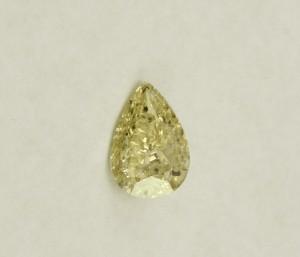 Send to Kindle–
Send to Kindle–

Natural color diamonds, however, are an entirely different story. There – the more color the better! These diamonds get their color from changes in the crystal lattice due to exposure to pressure, radiation or certain gases while the diamonds are being formed deep in the earth. Color diamonds span the rainbow – pink, red, orange, yellow, green, blue, purple, brown…
When it comes to choosing a natural color diamond, the main “C” that gives it its value is “Color.” Cut and clarity bear less weight than for a “regular,” colorless diamond.
How does the color scale work for a colored diamond?
The more saturated the color is in a color diamond, the more valuable it will be. All colors except yellow can be given a grade of Faint, Very Light and Light. The grading can further progress to Fancy Light, Fancy, Fancy Intense, Fancy Vivid, Fancy Dark and Fancy Deep. Deeper colors on the whole are more valuable than lighter colors, although some of the beauty (and value) is in the eye of the beholder. The Gemological Institute of America (originators of the color grading scale) mention that Fancy Vivid and Fancy Deep generally command the highest prices (even though Fancy Dark is technically higher on the scale than Fancy Vivid).
Many colored diamonds also have secondary hues (called overtones). This color is not the dominant color of the diamond, but accents it and is added to the primary color as an adjective. Examples would include “purplish pink,” “yellowish orange” or “brownish green.” Diamonds with secondary hues are often not as valuable as their pure-color counterparts, but if you’re choosing a diamond for a particular piece of jewelry, you may find that the secondary color gives just the hue you were looking for. Combinations like blue green, bluish green, yellowish green, and purplish red, for example, often look much nicer than a straight color.
After color, carat weight is the next important C for a colored diamond. Colored diamonds are much rarer than their colorless counterparts, and therefore there are fewer large ones in circulation. For example, while there are notable colorless diamonds that weigh in the hundreds of carats, the largest pink diamonds hover around 30 carats or lower, the largest green diamond at about 40, and the largest red diamond ever found was 5 carats! Every carat and fraction of a carat is very significant when it comes to colored diamonds.
Clarity and cut are less important for colored diamonds. Clarity in particular – the color often obscures any imperfections – although glaring imperfections would obviously decrease the value of the diamond. And cut with colored diamonds is a test of the cutter’s skill. Since the color saturation is not always even throughout the diamond, it is up to the diamond cutter to cut in a way that brings out the color to best effect. Radiant, cushion, heart and pear shapes tend to enhance the color the most, but every diamond is individual.
Rare and beautiful, color diamonds can become exquisite and valuable pieces of jewelry. In the end, though, the color needs to match with your taste and style. There’s enough variation out there in the world of colored diamonds to make everyone happy, so… the choice is up to you!
About The Author:
Marina Seren is the PR Manager of Seren Diamond Ltd., a Natural Fancy Color Diamond manufacturer and exporter. Seren Diamond cuts, polishes and sells natural color diamonds to private collectors, jewelry stores, and jewelry designers who want the exclusive and the unique.
